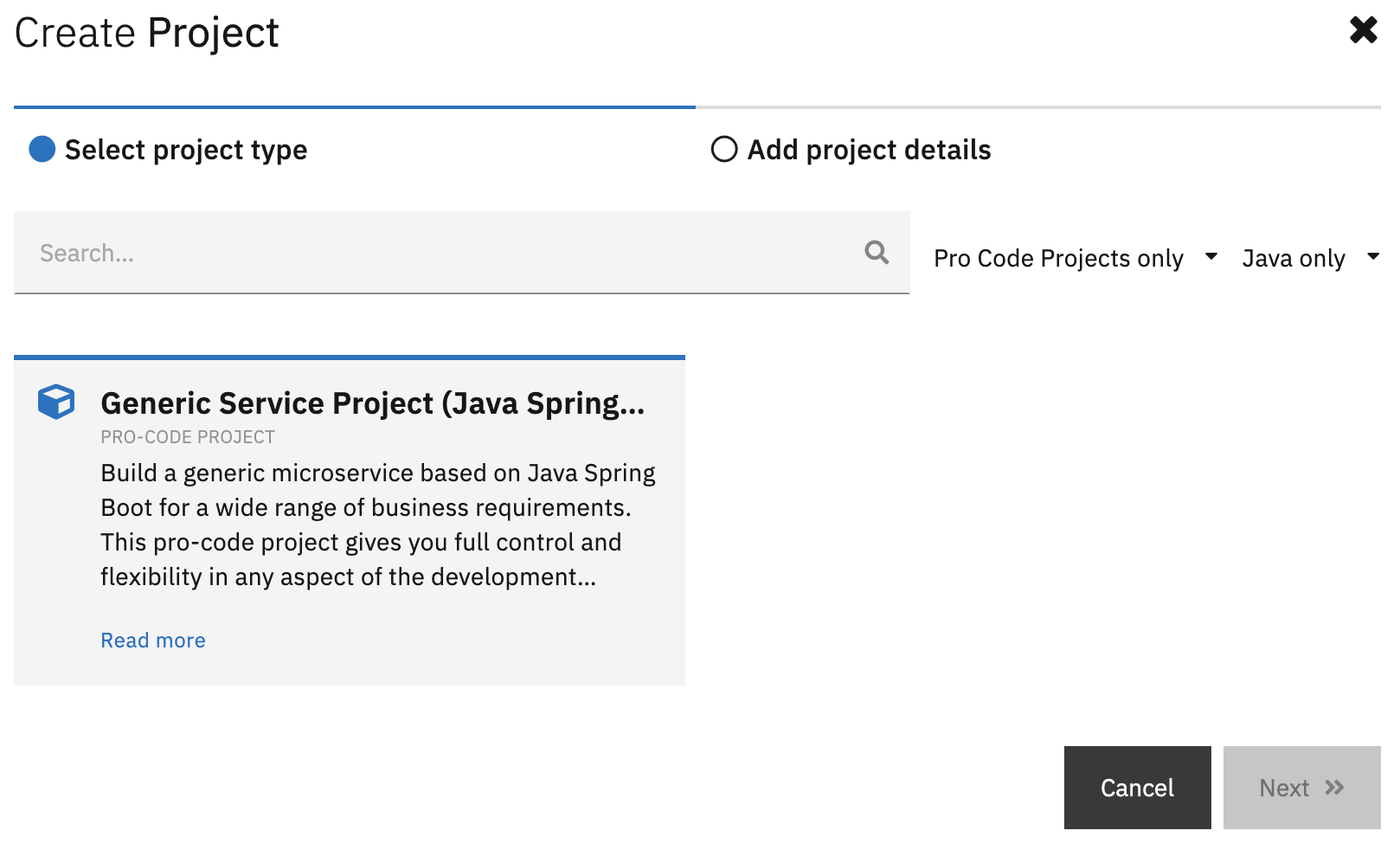Use an existing Spring Boot Application in the Workbench
You already have an existing Spring Boot application which you want to transform to a IBM DevOps Solution Workbench Project to use the benefits of the Workbench.
Description
In this How-To you will find the steps that are needed to embed your existing Spring Boot application into IBM DevOps Solution Workbench by creating a new Workbench project and moving the implementation files to it.
For this use case the stack "Generic Service Java" is recommended.
Please note that the links to the workbench tools in this tutorial only apply to the IBM Education Environment we provide. If you are using a different environment, e.g. your own installation, you will need to navigate directly to the required tools.
Preconditions
- You are fine with Spring Boot (
spring-boot-starter-parent) version 2.4.6 as parent. - You are using Maven as build automation tool.
Steps
Get ready for Java Generic Service development
-
Before we start with the project, please have a look into the Product Documentation - Stack Java Spring Boot to learn about the prerequisites that are necessary for Java Generic Service development.
-
Now please download and install the Maven dependencies that are described here.
Create a new project
-
Open the Solution Designer and create a new project of type "Generic Service Project (Java Spring Boot)".

-
Open the new project and create a new pipeline in the CI / CD area. Dependent on your use case please define either a Deploy pipeline or a Release pipeline. Please check the Product Documentation for further information if needed.
-
After this, please clone the new project repository using Git. You can use the URL of the source code repository in the "Git" panel at the bottom of the Solution Designer.

-
When you open the cloned project, you can find some pre-generated files in the
srcfolder. Please go through the stubs and delete the ones that are not needed for your use case. -
Merge the content of your
application.yamlfile into the pre-generated one. -
Merge the content of your
pom.xmlfile into the pre-generated one. Be aware, that further adoptions might be needed, if you have to use another parent. The default parent hasspring-boot-starter-parentin version 2.4.6 as its parent.
Potentially needed adoptions
Depending on your use case, some further adoptions might be helpful for you.
Provide private maven artifacts
If your project is relying on private maven artifacts, then you have to add access to your private maven repository, see here for further details.
Provide additional certificates
If your project is accessing ressources with not yet trusted certificates, then they can be easily added - see here. IBM DevOps Solution Workbench takes care, that they're present in the JVM during runtime.
Base URL of REST APIs
If you are providing a REST API, then the base URL must start with the project acronym.
Use the Workbench Kafka cluster�
Easy: Use the generated EventService class. You just have to bring in your topic name. Alternatively, use the EventService as example and use the KafkaTemplate and the KafkaTopicsHelper in your code.
Known limitations
- Sending and consuming Kafka events of other 'native' IBM DevOps Solution Workbench solutions is not possible, yet.